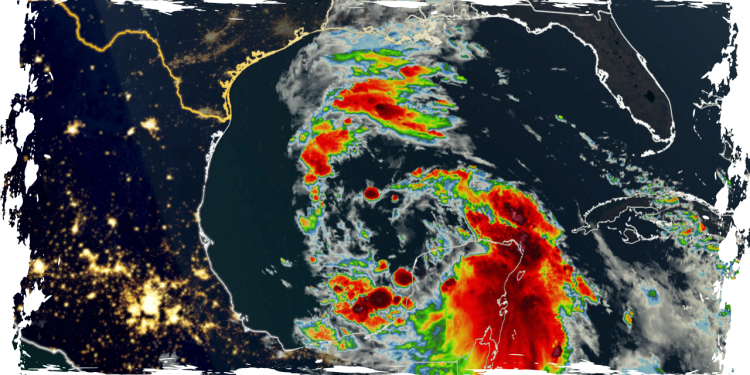Parts of South Texas and northeastern Mexico are now under a tropical storm warning as the first tropical threat of the year approaches.
As we begin a predicted hyperactive hurricane season, another area of tropical concern is also on the horizon. This week, we are keeping a close eye on the developments in this region.

The National Hurricane Center has designated the system in the Gulf of Mexico as Potential Tropical Cyclone One, which is currently posing a threat to the southwestern Gulf Coast. The system is expected to bring torrential rainfall and increase the risk of floods not only in the US, but also in certain parts of Mexico and Central America. Despite its current disorganized state, the system is being closely monitored for any potential development.
The storm, known as Potential Tropical Cyclone One, is yet to reach the status of a tropical storm. However, meteorologists predict that it will soon intensify and become a threat to the regions located under the tropical storm warning. This situation is expected to persist for the next 48 hours.
On Tuesday morning, the system boasted 40 mph winds. Should it develop a coherent circulation, it would earn the name Tropical Storm Alberto. Its progression is predicted to happen by late Tuesday or Wednesday with a projected approach towards the northern coast of Mexico by Wednesday night.
Although the system may not remain over water for long, its impact in terms of heavy rainfall and flooding will be significant. Regions such as Central America, southern Mexico, and the western Gulf Coast of the United States are predicted to experience days of incessant rain.
As the gyre churned, heavy rain was already ongoing on Monday in various parts of Mexico, Guatemala, Belize, El Salvador, and Honduras. These areas could experience double-digit rainfall totals by Thursday. While rain is desperately needed in some parts of Mexico and Central America that have been bone-dry due to unrelenting heat for weeks, day after day of heavy rain could quickly overwhelm parched soils that are unable to absorb water as fast as it falls. This could lead to dangerous flooding.
As we head towards the weekend, the western Gulf Coast of the US is likely to experience double-digit rainfall totals, particularly in coastal and southern Texas. This can be attributed to the deep tropical moisture that is fueling storms in the region. Additionally, other parts of the Gulf Coast are expected to receive several inches of rainfall through midweek.
The Texas coast is facing a significant risk of flooding due to heavy rainfall. As per the latest update, the risk is currently at level 3 out of 4, indicating the severity of the situation. The forecast predicts that the risk will remain high on Tuesday and Wednesday, affecting much of South Texas. It is essential to stay alert and take necessary precautions to ensure everyone’s safety.
The Weather Prediction Center issued a warning on Monday that the air over the Gulf Coast will be saturated with “incredible amounts of moisture” by Wednesday. The center cautioned that this could result in flash flooding, which could happen quite easily.
The US Gulf Coast isn’t exactly thrilled to see heavy rain in certain areas. While June has had less rain after a soaking spring, the soil and nearby rivers in eastern Texas and western Louisiana are still saturated.
Development is underway in the Gulf of Mexico, stirring up another tropical threat in the Atlantic.
There is an area of showers and thunderstorms located a few hundred miles east of the Bahamas that could potentially develop into a tropical system later this week. Despite this, the National Hurricane Center has currently assigned a low chance of development for this system.
Over the next few days, there is a possibility for the area of stormy weather to develop as it moves westward. However, it is important that multiple atmospheric factors align for this to occur.
There is a possibility of a tropical disturbance forming, which may reach the southeastern US by Thursday or Friday. However, it is expected to be directed south of the heat dome affecting the northern areas. Although it is uncertain which regions will be affected, people residing anywhere between Florida to the Carolinas should keep a close watch on the forecast as it becomes clearer in the upcoming days.
Parts of the Southeast coast could experience heavy rain, while rough seas are expected from the Bahamas to the mid-Atlantic coasts, regardless of any potential development.












